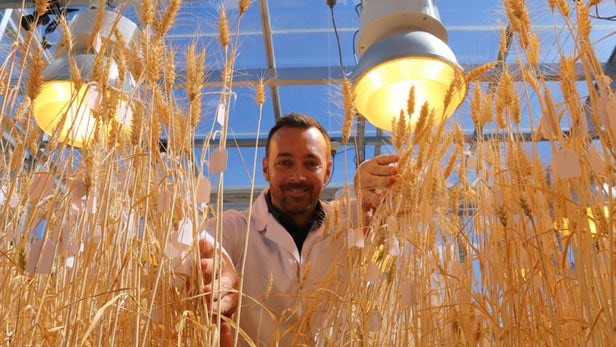
Breaking News
 Billionaire Businessman Reflects on 'Not Hard' Decision to Leave Crime-Ridden Chicago
Billionaire Businessman Reflects on 'Not Hard' Decision to Leave Crime-Ridden Chicago
 China's Mineral Power Play Will Succeed--Until It Doesn't
China's Mineral Power Play Will Succeed--Until It Doesn't
 Individualism and Self-Determination in the American Tradition
Individualism and Self-Determination in the American Tradition
 Gold's OMINOUS Warning: A Global Monetary Reset That'll BLINDSIDE Americans
Gold's OMINOUS Warning: A Global Monetary Reset That'll BLINDSIDE Americans
Top Tech News
 3D Printed Aluminum Alloy Sets Strength Record on Path to Lighter Aircraft Systems
3D Printed Aluminum Alloy Sets Strength Record on Path to Lighter Aircraft Systems
 Big Brother just got an upgrade.
Big Brother just got an upgrade.
SEMI-NEWS/SEMI-SATIRE: October 12, 2025 Edition
 Stem Cell Breakthrough for People with Parkinson's
Stem Cell Breakthrough for People with Parkinson's
 Linux Will Work For You. Time to Dump Windows 10. And Don't Bother with Windows 11
Linux Will Work For You. Time to Dump Windows 10. And Don't Bother with Windows 11
 XAI Using $18 Billion to Get 300,000 More Nvidia B200 Chips
XAI Using $18 Billion to Get 300,000 More Nvidia B200 Chips
 Immortal Monkeys? Not Quite, But Scientists Just Reversed Aging With 'Super' Stem Cells
Immortal Monkeys? Not Quite, But Scientists Just Reversed Aging With 'Super' Stem Cells
 ICE To Buy Tool That Tracks Locations Of Hundreds Of Millions Of Phones Every Day
ICE To Buy Tool That Tracks Locations Of Hundreds Of Millions Of Phones Every Day
 Yixiang 16kWh Battery For $1,920!? New Design!
Yixiang 16kWh Battery For $1,920!? New Design!
 Find a COMPATIBLE Linux Computer for $200+: Roadmap to Linux. Part 1
Find a COMPATIBLE Linux Computer for $200+: Roadmap to Linux. Part 1
NASA-inspired "speed breeding" boosts wheat production threefold

Our planet is expected to host an extra two billion people by 2050, but the amount of arable land we've got to work with won't be changing all that much. How exactly we're going to feed all these hungry mouths is a problem scientists are looking at from every angle, including creating heat-resistant cows, vertical farms and lab-grown hamburgers. Researchers are now reporting an advance in a NASA-inspired field known as "speed breeding" that relies on intense lighting regimes to raise crops several times faster, and boost their health at the same time.




Developed by scientists at the University of Sydney, the University of Queensland (UQ) and the John Innes Centre, the technique builds on research trialled by NASA more than a decade ago as a way of producing food during space missions. It sees the crops raised here on Earth inside a glasshouse, under continuous low-cost LEDs that emit light at specific wavelengths to boost photosynthesis.
"The far-red spectrum is important for triggering the reproductive growth and also light intensity for healthy robust plants," study co-author and UQ Senior Research Fellow Lee Hickey tells New Atlas.

Using its carefully crafted lighting setup, the team was able to grow six generations of wheat, chickpea and barley plants and four of canola plants in a single year, as opposed to two or three in the glasshouse or a single generation in the field. It says it also works for peanuts, amaranth and lentils, and expects it to work for sunflower, pepper and radish.
"In the glasshouse we currently use high pressure sodium vapor lamps and these are quite expensive in terms of the electricity demand," says Hickey. "In our paper we demonstrate that wheat and barley populations can be grown at a density of about 900 plants per square meter, thus in combination with LED light systems, this presents an exciting opportunity to scale up the operation for industry use."
Hickey says the speed breeding technique has the potential to not only boost yields for farmers, but lead to crops of better quality. The team compared plant features such as the amount of tillers and grains per spike to those grown under regular greenhouse conditions, finding that often the speed bred plants came out on top. Raising plants this fast has been possible before, but producing healthy specimens that compare to the real deal hasn't been so easy.



